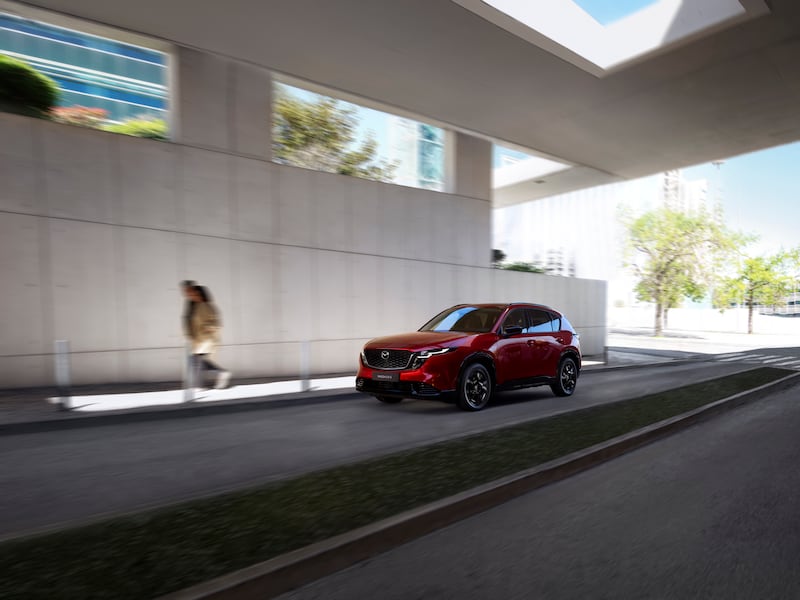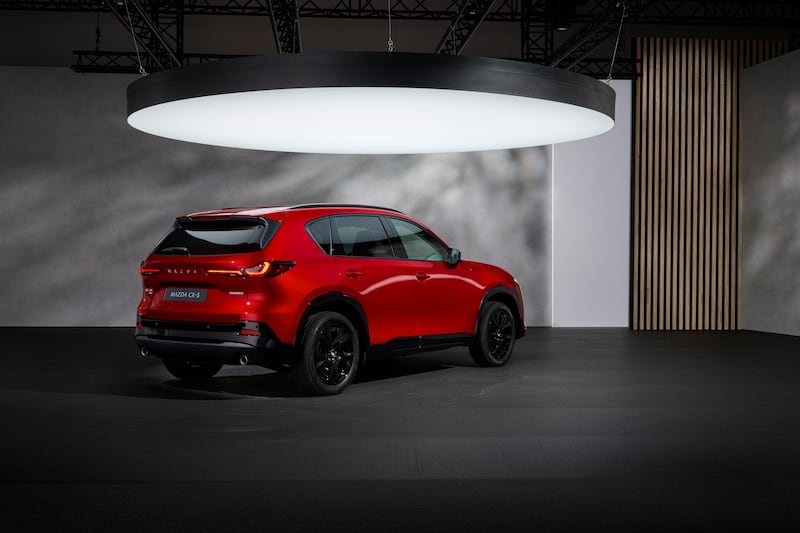Mazda is being very careful in how it updates and renews its CX-5 SUV. Which is perhaps hardly surprising, as across two previous generations the CX-5 really has been the company’s saviour. Back in 2012, when the first-generation CX-5 launched, it was very close to being a make-or-break model for the Japanese car company.
Thankfully, it was a make model, and the CX-5 has gone on to find 4.7 million homes worldwide since then. So, clearly, Mazda is treading carefully, mindful of staying on the right side of that multi-million-strong customer base.
The new CX-5 is ever so slightly larger than the model it replaces, which means it’s still a fairly trim machine for a family SUV, but Mazda has worked hard on the packaging of the car, trying to make it ever more appealing to growing families. There’s an extra 115mm in the wheelbase and in the overall length, which stretches out the rear legroom, but boot space has also grown, to 583 litres, which is an increase of 61l compared with the outgoing model.
If the styling looks very familiar on the outside – and it does, to the point where you could easily confuse this all-new model with a thorough update of the old one – then in the cabin, things have changed quite a bit.
READ MORE

For a start, Mazda has – regrettably in our view – followed the rest of the car world in excising all but a tiny handful of dashboard buttons in favour of a big new touchscreen. That measures 12.9in for standard versions, and 15.6in for higher-spec models, and Mazda is drawing on Google’s expertise for the CX-5’s on-screen functionality. That means you can access the Google Play store to download extra apps, such as Spotify or other streaming services, and it means that the satnav system is now Google Maps-based, which should be an improvement over the current Mazda set-up, which is starting to look a bit clunky. It also means that the CX-5 uses Google’s Gemini artificial intelligence system for voice control.
The shifting of controls – including heating and air conditioning – to the touchscreen is quite an about-face for Mazda. Previously, the company had been reluctant to move away from its smaller-screen layout, with a BMW-style physical clickwheel controller. Indeed, Matthew Valbuena, Mazda North America’s lead engineer for its infotainment systems, previously told website Motor Authority: “Doing our research, when a driver would reach towards a touchscreen interface in any vehicle, they would unintentionally apply torque to the steering wheel, and the vehicle would drift out of its lane position. And of course with a touchscreen you have to be looking at the screen while you’re touching. so for that reason we were comfortable removing the touchscreen functionality.”

So why the change? Customer demand, says Mazda. People just seem to want their big screens and on-screen customisation. The CX-5 also gains a wireless phone charger for the first time, which backs-up the addition of wireless connections for Apple CarPlay and Android Auto.
There are some other interior changes too, such as a new three-spoke steering wheel, which ditches the old Mazda badge with its stylised “M” logo in favour of the word “Mazda” picked out in neat chrome script. The old-style badge isn’t completely abandoned though – it’s still front and centre in the radiator grille.
For now, the new CX-5 will come with only one engine choice, an updated version of the existing 141hp 2.5-litre four-cylinder petrol SkyActiv-G engine, with mild-hybrid assistance. This might be something of a stumbling block for the new CX-5 in Ireland, as quite apart from the large engine capacity still being off-putting for drivers of a certain age, the lack of a full hybrid system leaves the CX-5 with unfashionably high CO2 emissions of about 168g/km of CO2, and official fuel economy of 7.7l per 100km. Mazda will have to work hard to convince current CX-5 buyers to make the switch, not least because 58 per cent of them go for the diesel model.

The front-wheel drive CX-5 will accelerate from 0-100km/h in 10.5 seconds. There will be the option of four-wheel drive, but Mazda has not yet released performance figures for that version, although we do know that the CX-5 will be able to tow up to 2,000kg.
It won’t be the only engine for the CX-5, though. Mazda is hard at work on a next-generation petrol-hybrid engine, currently called SkyActiv-Z, which will use the clever variable compression set-up of its current SkyActiv-X engine (basically, that gives you smooth petrol running and low NOX, with diesel-like fuel economy) as well has having a more advanced full-hybrid system.
What the CX-5 won’t get is a fully-electric version. Having been rather electric-agnostic so far, Mazda is scrambling to catch up in EV terms, and will shortly launch its new Mazda 6e electric saloon as a rival to the likes of the Tesla Model 3 and VW ID.7, and the Japanese company will spin off a new CX-6e as an SUV model, similar in size to the CX-5, from the same platform. Mazda’s new electric car platform is a co-production with Chinese company Changan, which is already selling the Mazda 6e in that country, where it’s badged as the EZ-6.
The first versions of the new CX-5 should arrive in Ireland this side of Christmas, and it will be priced from €39,965 in its most basic form. As with the current model, there will be a choice of Prime-Line, Centre-Line, Exclusive-Line and Homura specifications, each with a unique interior finish.














